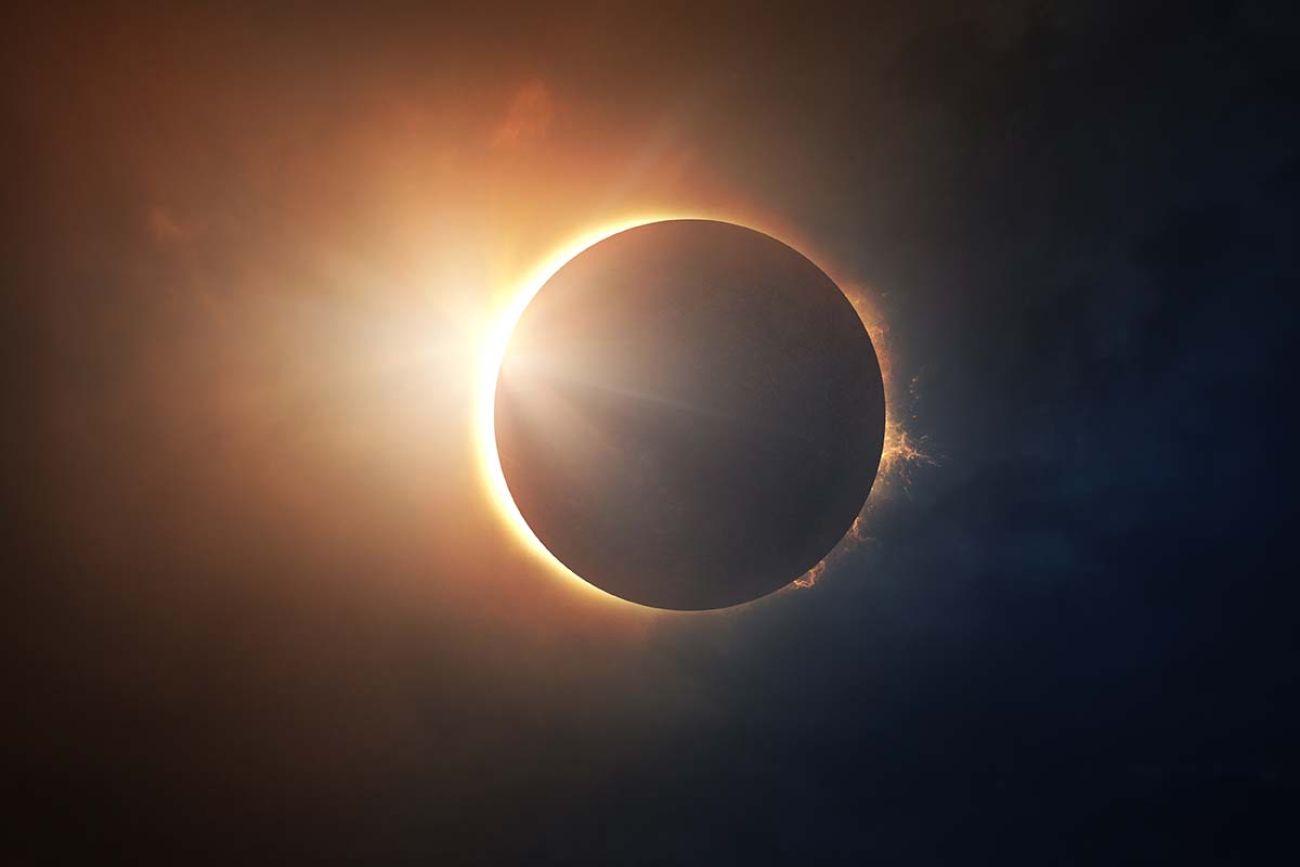What to know about the April 8 total solar eclipse in Michigan


- Michigan will be in the path of a total solar eclipse on April 8, for the first time in 70 years
- The last total solar eclipse visible in Michigan was in 1954 when the western part of the Upper Peninsula fell in the eclipse’s path
- There are some travel options for residents who want a better view
April 5: What time is the eclipse in Michigan? Where to go and what you’ll see
April 3: Eclipse 2024: New map casts shadow of doubt, but Luna Pier still in path
The total solar eclipse coming on April 8 will be the first one visible from Michigan in 70 years. While most people will have to drive or fly to see it, a small part of the state does fall on the edge of the eclipse’s path.
A total solar eclipse occurs when the moon passes between the sun and the earth, completely blocking the sun. The sky will become dark like it would during dusk or dawn.
The April 8 eclipse will start at approximately 1:58 p.m. in southeast Michigan and reach maximum totality around 3:14 p.m. It will conclude with a final partial eclipse at about 4:27 p.m.
Related:
- What would a solar eclipse look like from the moon? MSU astronomer answers that and more
- Solar Eclipse 2024: The only Michigan town that is in the path of totality
- Solar eclipse 2024: What will Michigan see? How to get glasses, other answers
- Solar eclipse April 8: How Michigan residents, others can protect eyes
- Solar eclipse 2024: What time and other answers from a Michigan astronomer
Although most of the state doesn’t fall in the eclipse’s line of totality, the area where the total eclipse can be viewed, a small part of Monroe County in southeast Michigan, is right on the edge of the path.
The eclipse’s predicted path of totality begins in Mexico, through the U.S. to the coast of Newfoundland, Canada. The eclipse is expected to last about 4 hours, starting around 11:07 a.m. Pacific Daylight Time and leaving continental North America around 5:16 p.m. Newfoundland Daylight Time, according to NASA.
In the U.S., Texas, Arkansas, Oklahoma, Missouri, Kentucky, Indiana, Ohio, Illinois, Pennsylvania, New York, Maine, Vermont, and New Hampshire fall on the path of totality. A small part of Tennessee is also on the path, according to NASA.
The next total solar eclipse that will be visible in the United States will be Aug. 23, 2044 but most of the state doesn’t fall on the line of totality, according to NASA. Michiganders won’t be able to see another total solar eclipse without traveling out of state until Sept. 14, 2099.
Best places to view the eclipse
A very small part of Michigan falls on the path of totality for the April eclipse. Residents in Erie Township should be able to see it.
For Michigan residents, Cleveland is the closest major city that falls on the path of totality. There, the eclipse will reach maximum totality at 3:15 p.m. and will end at 4:29 p.m.
The Cleveland Museum of Natural History will host a watch party beginning at 10 a.m. Cleveland is about a 2-hour drive from the Michigan-Ohio border in Erie Township.
For those who want a view of the eclipse from the air rather than the ground, there are a few airplane flights that will travel along the eclipse's path of totality
Delta Air Lines recently added a special flight from Austin, Texas, to Detroit for travelers to view the eclipse. Delta flight 1218 will depart Austin-Bergstrom International Airport at 12:15 p.m. Central Time and land at Detroit Metropolitan Airport at 4:20 p.m. Eastern Time. The flight is expected to travel in the eclipse’s path of totality for the duration of the eclipse.
The airline is using an A220-330 aircraft, whose extra-large windows should offer better views of the eclipse.
The flight sold out within 24 hours, but the airline has added a second flight from Dallas to Detroit. Delta Flight 1010 will depart Dallas-Fort Worth International Airport at 12:30 p.m. Central Time and land in Detroit at 4:20 p.m. Eastern.
As of Tuesday morning, basic economy and first class tickets are sold out but main cabin tickets are priced at $979 and comfort + for $1,050.
There are other opportunities for air travelers to view the eclipse. Delta Air Lines flight 5699 from Detroit to Westchester County, New York, will depart at 2:59 pm Eastern Standard Time.
How to safely view the eclipse
Looking at the sun directly, even for a few seconds is already very harmful to the human eye. Looking at the eclipse is even more harmful because solar radiation is intensified during an eclipse and can cause more damage to the eyes faster.
“It's almost like getting sunburn on the very sensitive cells that help you see in the eye,” said Dr. Joshua Lange, an optometrist at Clearview Eyecare in Novi. “Even just looking at it for a second or two might be too much and those cells can literally be burned from that.”
Special eclipse glasses should follow the ISO 12312-2 safety standard. NASA warns people to not look at the eclipse through camera lenses, telescopes, or binoculars while wearing eclipse glasses. The solar rays could burn through the filter and cause eye injuries.
If you can’t find safety glasses then there are alternatives to viewing it using products you may have in your home, Lange said.
“A pasta colander that you actually would strain pasta with has a bunch of holes through it, you could literally hold it up and look at the ground and see the eclipse through the pin holes that you're looking at.”
Michigan Environment Watch
Michigan Environment Watch examines how public policy, industry, and other factors interact with the state’s trove of natural resources.
- See full coverage
- Subscribe
- Share tips and questions with Bridge environment reporter Kelly House
Michigan Environment Watch is made possible by generous financial support from:
Our generous Environment Watch underwriters encourage Bridge Michigan readers to also support civic journalism by becoming Bridge members. Please consider joining today.
See what new members are saying about why they donated to Bridge Michigan:
- “In order for this information to be accurate and unbiased it must be underwritten by its readers, not by special interests.” - Larry S.
- “Not many other media sources report on the topics Bridge does.” - Susan B.
- “Your journalism is outstanding and rare these days.” - Mark S.
If you want to ensure the future of nonpartisan, nonprofit Michigan journalism, please become a member today. You, too, will be asked why you donated and maybe we'll feature your quote next time!




